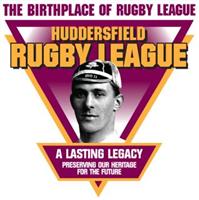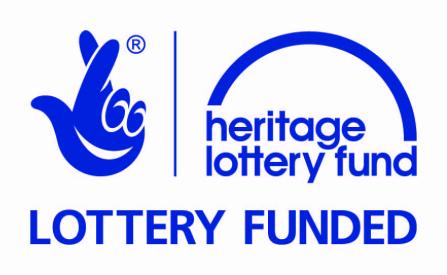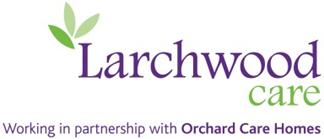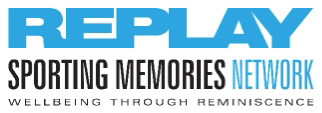Archiving and Digitisation Training Instructions
West Yorkshire Archive Service
Thursday 6th and Monday 10th September 2012
Outline of Memorabilia Strategy
Instructions to Volunteers Collecting Memorabilia
ON FIRST CONTACT WITH THE OWNER TRY TO ESTABLISH THE TERMS ON WHICH THE PROJECT CAN ACCESS THE MEMORABILIA
1. If the owner wishes to retain the memorabilia, take the mini-scanner and a digital camera with you to record the memorabilia.
IN PRESENCE OF THE OWNER
1. List memorabilia in the second column of the table over the page, on two of these ‘permission’ forms.
2. Read through A and B below with the owner. Ask for a tick in one box under ‘A’ and both boxes under ‘B’.
3. Ask for the owner’s signature on both permission forms and add your signature. Retain one form for the project and leave the other as a receipt.
AWAY FROM THE OWNER
1. Complete catalogue of memorabilia in the table over the page.
2. Clean/package to protect memorabilia if necessary and practical.
3. Pass collection or digitised material to Dave Calverley or Brian Heywood
4. DC/BH will:
- digitise/catalogue digitisation elements according to metadata system
- create a hard copy of the image or document
- return memorabilia to owner or arrange for archiving.
Options for owners of memorabilia are:
1. donated to the project, digitised, housed permanently at Rugby League Archive, brought out for exhibitions
2. loaned for duration of project, digitised, housed temporarily at Rugby League Archive, brought out for exhibitions, returned to owner at end of project
3. digitised, loaned for duration of Tolson/local exhibitions, returned to owner when exhibitions end
4. digitised, retained by owner.
Headings for Cataloguing memorabilia:
- Loaned/Donated By
Memorabilia:
- Title/description
Donated?
- Loaned for Project duration?
- Loaned for Tolson Exhibition?
- Retained by Owner?
- Current Location
Digitisation:
- Camera
- Scanner
- Not Yet
- Other Information
- Digitisation
Headings for Cataloguing Metadata:
- Title/description
- Loaned/donated by
- Digitisation Method (Camera/Scanner)
- File Name
- Entered by
- Date
TIFF File Master (Mb)
- PDF File (Mb
- dpi
- Bit depth
Storage Formats/Locations:
- Server
- External Hard Drive
- Disk
- Memory Stick
- Additional Notes (copyright etc.)
Create:
- TIFF file as highest resolution ‘masterfile’
- jpeg copies to view on computer
- store TIFF and jpeg files in separate places
- set benchmark resolution size for digitisation
Back-ups of Resources
Back-ups should be in different formats e.g. disk, memory sticks to reduce risk of all back-ups being in formats that become obsolete.
A portable external hard-drive is essential.
‘Frank’ and ‘Anne’ of Pennine Horizons would advise us about their metadata practice.
Other Archiving Advice
Ageing of collections
All collections age, for example, documents fade, but we can slow this down.
Causes of Deterioration:
- Biological (mould, pets damage)
- Light
- Chemical
- Pollution
Protecting and Restoring
The priority is to protect before looking to restore, as attempts at restoration can cause further damage.
Textiles – ask Tolson Museum to advise; dangers include light, bacteria, mould, stains, creases, absorption of liquid.
Cleaning Dirt from Documents
Project has sponges which can be gently rubbed over undamaged, stable parts of documents, starting at furthest point away and working towards you.
Avoiding Further Damage to Documents
1. Documents’ ’Natural State’
Documents have a natural state, usually the state in which they have been stored, e.g. rolled up, folded. Changing this state, e.g. unfolding, risks damage and should be done carefully. Once reading/digitisation is completed, documents should be restored to their ‘natural state’.
2. Accidental Contamination
Avoid accidental contamination by:
- washing hands regularly
- keeping food and drink clear
- wearing latex gloves to handle photographs, or particularly dirty items.
3. Scrap Books
To protect pages dry tissue paper between them is recommended. Plastic sheets should be avoided.
Do not clean as newsprint and glue could be disturbed.
4. Photographs
Photograph through frames and plastic wallets rather than removing frames or wallets.
5. Paper Clips and Post-It Notes
Do not use paper clips or post-it notes.
6. Packaging
Options include:
- book jackets
- folders
- acid-free plastic, available from WYAS (can scan/photocopy and view through this).
Problematic Items
WYAS has invited us to contact them for help with particularly dirty or fragile items.
Digitisation
Avoid dirt from recently cleaned documents getting onto the scanner.
Use the mini-scanner for:
- torn/brittle documents that are bigger than the scanner
- photographs that are bigger than the scanner
- books/scrapbooks with glue or other fragile binding
- Avoid ‘ramming’ the scanner lid down to flatten documents.
Oral History
Include in permission form:
- use of interviews/interview extracts for
- website
- exhibitions
- schools’ scheme
- transcription for project book
- change of file data type (WAN mp3 etc).
Copyright Regulations
General Rules:
- authors own copyright of their material
- ideas do not carry copyright; material created from ideas does<
- match day programmes, testimonial brochures – copyright is the club’s
- photographs – copyright is the photographer’s, or those commissioning the photograph
- project should make ‘reasonable efforts’ to trace copyright owners
- project should attribute copyright where possible.
General copyright information should be included on website to protect copyright of material.
e.g. Disclaimer: ‘Nothing on this website may be copied or published without permission of this community archive. This does not mean we will not give permission but you have to ask us. The archival material has come from many sources and there are many copyright holders.’
Other Websites
The project is happy to share information with other relevant websites, such as the WYAS ‘Now Then’ Sporting Heroes website, the Giants’ Supporters’ Association, and other rugby league history sites.
SUGGEST ALL MEMBERS OF STEERING GROUP HAVE COPIES OF MEMORABILIA AND ORAL HISTORY PERMISSIONS DOCUMENTS.
We will investigate WYAS online accreditation.
Forms
The following forms are now available for download:
Interviewing A Player;
Interviewing A Supporter;
Memorabilia Metadata Record;
Memorabilia Permissions Form.
Device instructions:
Flip-Pal Scanner;
Digital Recorder.




